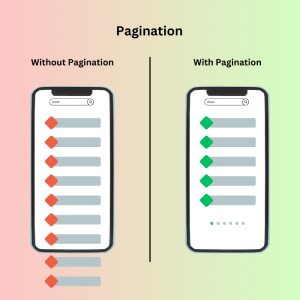Master AI & Build your First Coding Portfolio with SkillReactor | Sign Up Now
Pagination and Filtering with REST API’s
Introduction
In the field of web development, REST (Representational State Transfer) APIs have emerged as a fundamental element for crafting networked applications. They provide a framework of protocols and standards that streamline the process of exchanging data between different systems, offering both seamlessness and efficiency. A REST API serves as a conduit for communication between a client and a server via HTTP requests, supporting a range of operations such as CREATE, READ, UPDATE, and DELETE, which are collectively referred to as CRUD operations.
However, the challenge arises when databases expand, and the volume of data swells to daunting proportions. It is in these scenarios that pagination and filtering prove to be invaluable tools. Pagination breaks down extensive datasets into smaller, more manageable segments, ensuring that servers deliver data to clients in a structured and efficient way. Filtering, on the other side, enables clients to pinpoint and retrieve specific data subsets they require, thus streamlining the data retrieval process. Both pagination and filtering are more than mere features; they are essential components that allow APIs to manage large datasets effectively without compromising on performance or user experience. Their successful implementation is a critical factor in ensuring that APIs can scale up and remain user-friendly, underscoring their importance for developers delving into the realm of REST APIs.
Why Pagination?
In today's ever-growing data landscape, efficiently managing large datasets is a paramount challenge in the design of REST APIs. Pagination emerges as a key strategy in enhancing both performance and the user experience. Without pagination, APIs that load substantial amounts of data can strain both server and client resources, leading to performance bottlenecks. Pagination effectively counters this issue by dividing data into smaller, more manageable 'pages', simplifying the data browsing process for users. This not only streamlines the user experience but also boosts server efficiency and conserves data usage by limiting unnecessary data transfers.
